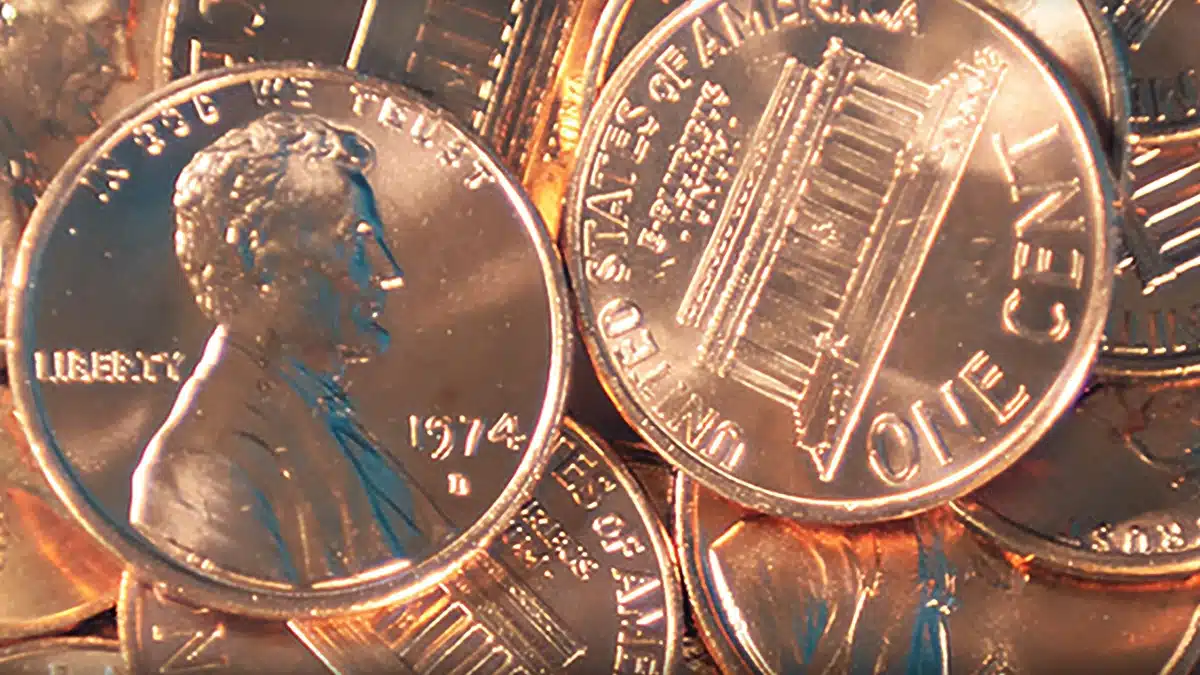
1974 was an interesting year in the annals of numismatic history. The country was putting the finishing touches on its planned Bicentennial celebrations. The United States Mint was gearing up to produce a range of commemorative coins and medals to mark the occasion. The year would also mark the final Blue and Brown Pack silver-clad Ike dollar issues and the Mint was hard at work contemplating the future of the country’s longest-serving denomination, the cent.
From 1971 to 1974, cent production increased dramatically, exacerbating a trend that began in the mid-1960s when the Mint transitioned from silver to clad coinage. Cent demand was so high by the late 1960s, that the Mint resumed production of circulating cent coinage at the San Fransico Assay Office in 1968. By 1974, demand for cents had gotten so high, that the Mint began to use the West Point Bullion Depository to strike cents as well. By the end of the year, West Point would contribute 128,957,523 cents toward Philadelphia’s reported mintage of 4,232,140,523. The West Point cents carry no mintmark and as far as we know, cannot be differentiated from coins struck at Philadelphia.
If original unopened mint bags of 1974 cents are ever located and can be traced to the facility, we would expect these coins to bring significant premiums over their Philadelphia Mint counterparts and that the third party certification industry would identify the coins as 1974 (W).
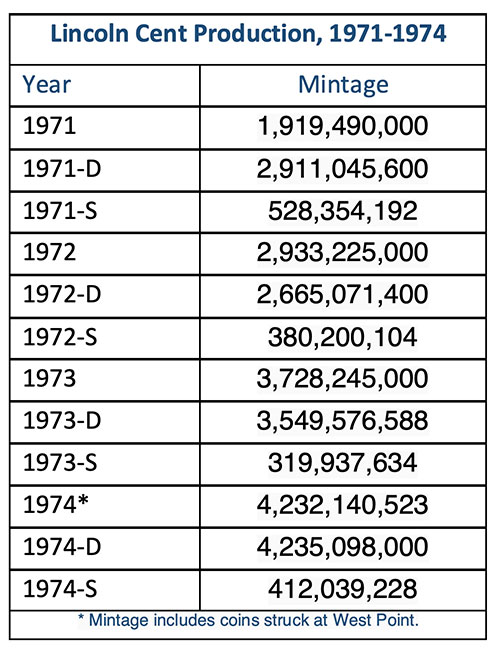 Complicating matters was a trend of volatility in the copper market.
Complicating matters was a trend of volatility in the copper market.
Copper prices rose by 43% from 1969 to 1970, before erasing most of those gains by the start of ’71. From 1971 to ’74, however, copper prices rose year to year reaching almost 86 cents a pound at the start of ’74.
To address this issue, the Mint began to investigate ways to lower the cost of cent production, settling on a 96% aluminum alloy as a possible replacement to bronze.
In total, the Mint struck approximately 1.5 million 1974-dated aluminum cents at the end of 1973. On March 27, the coins were reviewed by the Consumer Affairs subcommittee of the House of Representatives. After extended deliberation and pressure from the vending industry, Congress rejected the aluminum alloy, but did, on October 11, authorize the Secretary of the Treasury to reduce the amount of copper in the cent. By the end of 1974, copper prices receded to an acceptable level and the bronze alloy remained in use through the remainder of the decade.
In 1982, the issue would be revisited and a new alloy made of copper-plated zinc would replace the bronze cent.
How Much is the 1974 Lincoln Cent Worth?
Uncirculated Brown or Muted Red (Red Brown) Philly business strikes in high Mint State (above MS-65) can sell for anywhere from $10 to $15. Unless these coins are spectacularly toned, these coins have no foreseeable upside and should be avoided as a sufficient number of vibrant red examples survive.
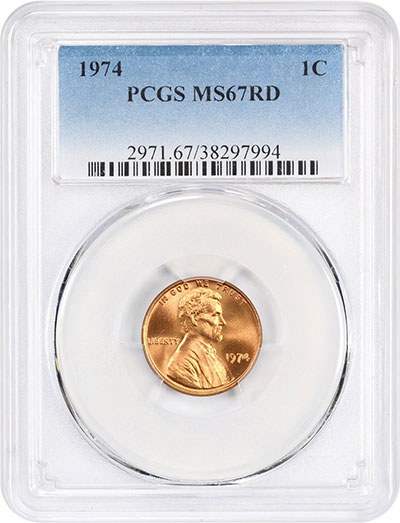 In full Mint State Red, MS65 examples have a value of between $10 and $20. The value of the 1974 Lincoln cent edges up by a few dollars in MS66 Red. Our expected value of a coin in this grade is between $20 and $30. These prices are more or less equivalent to the cost of submitting the coin for grading. 1974 cents have a larger premium in MS67 Red. One excellent example was sold in March 2020 at a David Lawrence Rare Coins online auction for $90.
In full Mint State Red, MS65 examples have a value of between $10 and $20. The value of the 1974 Lincoln cent edges up by a few dollars in MS66 Red. Our expected value of a coin in this grade is between $20 and $30. These prices are more or less equivalent to the cost of submitting the coin for grading. 1974 cents have a larger premium in MS67 Red. One excellent example was sold in March 2020 at a David Lawrence Rare Coins online auction for $90.
PCGS and NGC report a combined population of just two coins in MS68 Red (one each). With no public data available, it is a fool’s errand to try to ascertain a price for either of these pieces. But at just half a grade down, in MS67+ Red, two recent Legend Rare Coin Auctions results of $911 each suggest that a top pop 1974 Lincoln cent would easily realize a price exceeding $1,000 at auction.
As for the value of the priceless 1974 Aluminum cent patterns? This is a question we are asked quite frequently at CoinWeek. It is nearly impossible to quantify how unlikely it is that an authentic example heretofore unknown by the numismatic community would turn up, but it is possible. Of the 1.5 million examples struck, 11 are believed to be outstanding, and of that 11 only two are known.
One is currently on display at the Smithsonian Institution’s Value of Money Exhibit and is permanently impounded in the National Numismatic Collection, a donation of the United States Mint. The second example was discovered in 1973, reportedly by Albert Toven, a U.S. Capitol police officer. According to the story, the coin was dropped by a government official after a Congressional hearing on the efficacy of replacing the bronze alloy with an aluminum alloy. When Toven offered it back to the official, the official told Toven he could keep it.
This story has been published and repeated multiple times throughout the years but has all of the earmarks of a cover story. One told to “legalize” the private ownership of a pattern coin that was not officially released to the public. This example remains in private hands and was authenticated by PCGS in October 2005 and given the grade MS62. The value of this example likely exceeds six figures, but given its legally questionable status, a potential buyer would be advised to exercise caution when making an offer, or placing a bid as a protracted legal fight over the status of a privately-held 1974-D aluminum cent resulted in the coin being returned to the government.
Design
Obverse:
The obverse of the 1974 Lincoln cent was designed by Victor David Brenner and appears largely as it did when the type was first minted in 1909. The main difference on the 1974 obverse versus the 1909 version is the location of Brenners’ initials, V.D.B., which were added under Lincoln’s bust in 1918 after their removal from the reverse in late 1909. The date, 1974, appears to the right of Lincoln, and the motto IN GOD WE TRUST appears above the president. On the left of the 16th president is the word LIBERTY.
Reverse:
Frank Gasparro designed the 1959 Lincoln Memorial reverse that replaced the original 1909 Brenner wheat stalk design. Gasparro’s initials FG appear on the lower-right side of the Lincoln Memorial. Below the edifice and along the rim are the words ONE CENT, while the legend UNITED STATES OF AMERICA run along the top half of the reverse along the rim. Between the top of the Lincoln Memorial and UNITED STATES OF AMERICA inscription is the motto E PLURIBUS UNUM.
Edge:
The edge of the 1974 Lincoln cent is plain or smooth, without reeding or lettering.
1974 Lincoln Cent Designers
Lithuanian-born coin designer Victor David Brenner is best known for his iconic design for the Lincoln cent (1909-Present) (View Designer’s Profile).
Frank Gasparro was an American medalist and coin designer (View Designer’s Profile).
Coin Specifications
| Country: | USA |
| Year Of Issue: | 1974 |
| Denomination: | One Cent |
| Mint Mark: | None |
| Mintage: | 4,232,140,523 (includes 128,957,523 struck at the West Point Bullion Depository) |
| Alloy: | 95% copper, %5 tin and zinc |
| Weight: | 3.11 g |
| Diameter: | 19.05 mm |
| Edge: | Plain |
| OBV Designer | Victor David Brenner |
| REV Designer | Frank Gasparro |
| Quality: | Business Strike |
* * *
The post 1974 Lincoln Memorial Cent : A Collector’s Guide | CoinWeek appeared first on CoinWeek: Rare Coin, Currency, and Bullion News for Collectors.
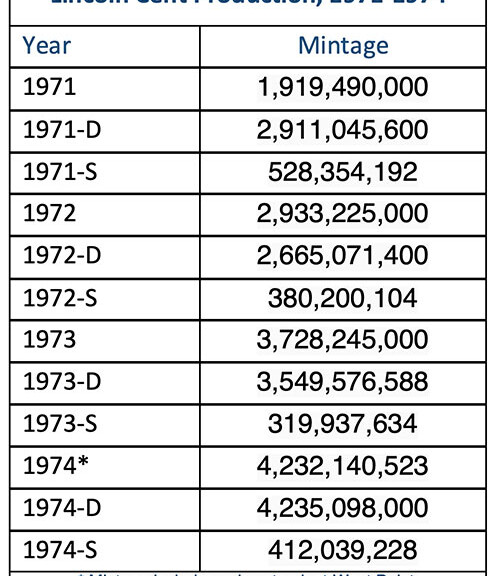
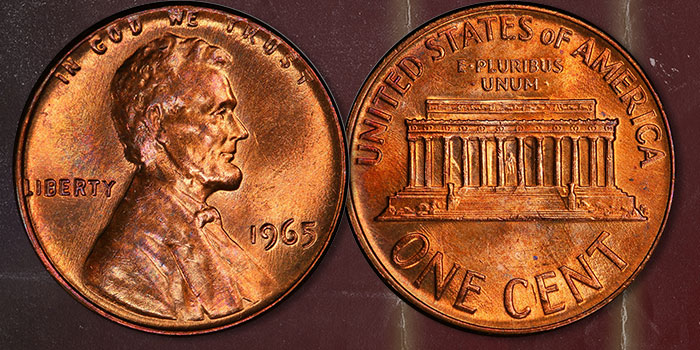

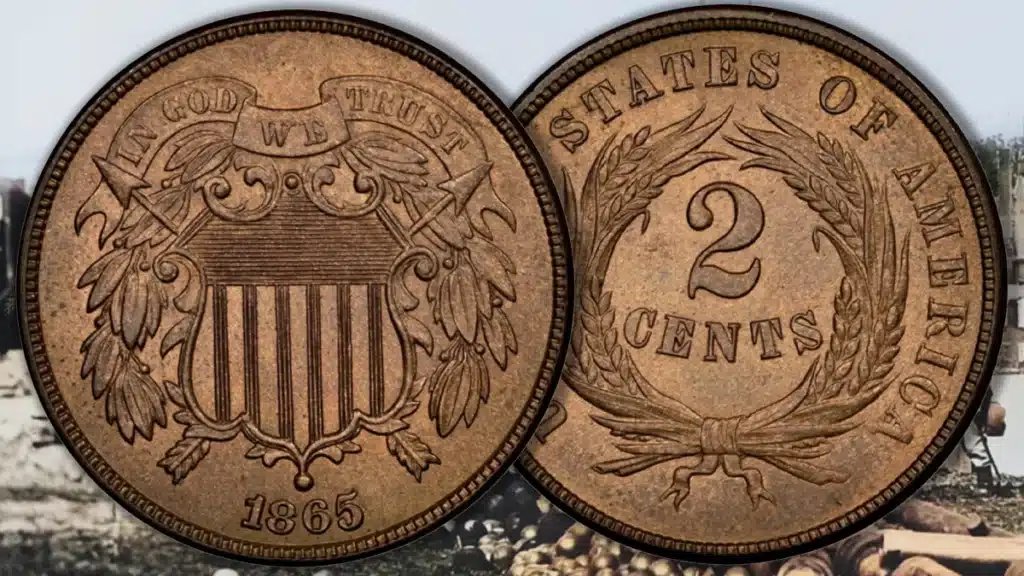
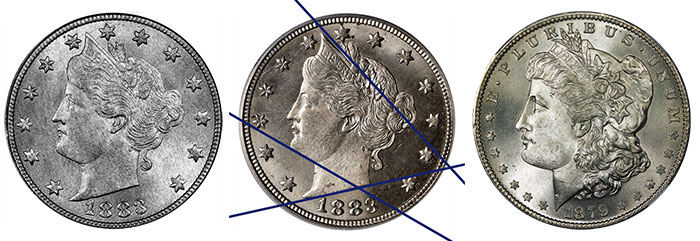
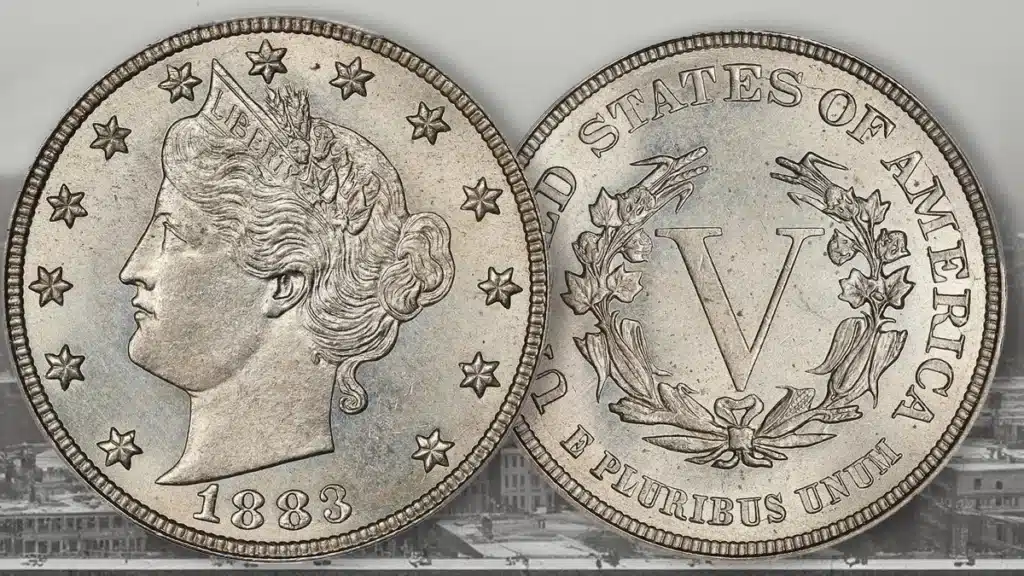


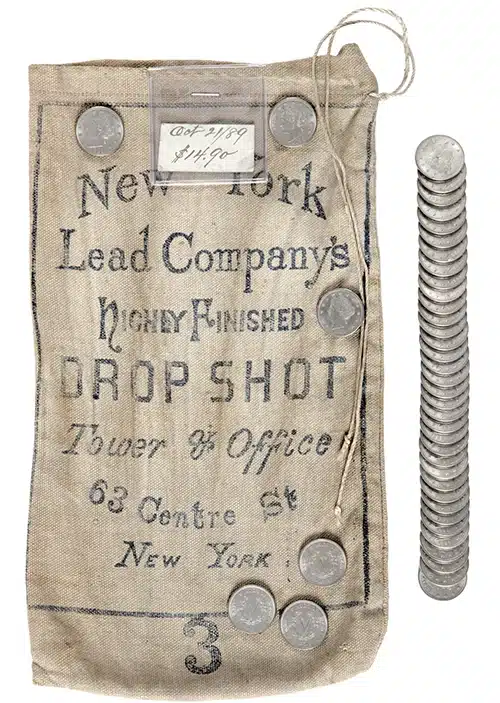
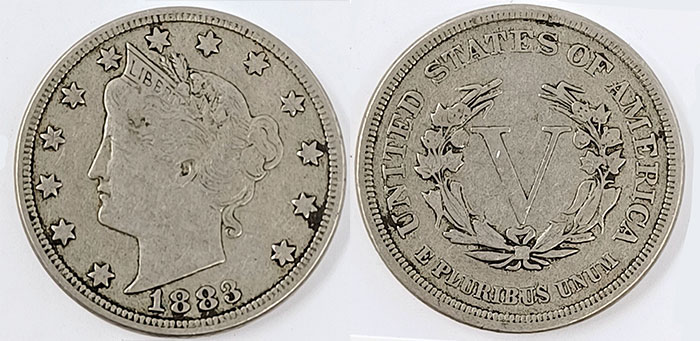
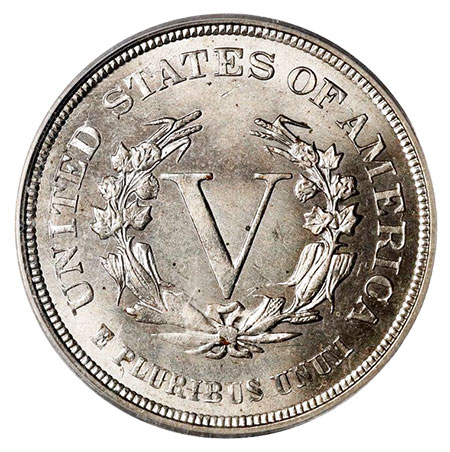 While the Liberty Head nickel may only infrequently be identified as the “Barber” nickel by hobbyists, the coins do have one widely popular nickname: the “V” nickel. The “V” refers to the large Roman numeral “V” that anchors the reverse design and indicates the coin’s denomination of five cents. The “V” sits within a wreath of cotton, corn, wheat and tobacco – all important crops representative of different parts of the country. Centered under the wreath is the inscription E PLURIBUS UNUM. No mention is made of the word “cent”. The absence of “cent” was not unusual, as the base metal three-cent nickel and the billon three-cent silver also told of their value using a Roman numeral and did not include the word.
While the Liberty Head nickel may only infrequently be identified as the “Barber” nickel by hobbyists, the coins do have one widely popular nickname: the “V” nickel. The “V” refers to the large Roman numeral “V” that anchors the reverse design and indicates the coin’s denomination of five cents. The “V” sits within a wreath of cotton, corn, wheat and tobacco – all important crops representative of different parts of the country. Centered under the wreath is the inscription E PLURIBUS UNUM. No mention is made of the word “cent”. The absence of “cent” was not unusual, as the base metal three-cent nickel and the billon three-cent silver also told of their value using a Roman numeral and did not include the word.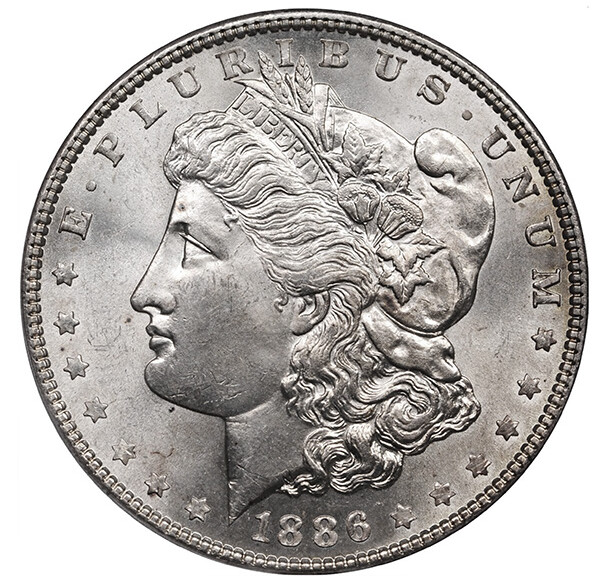
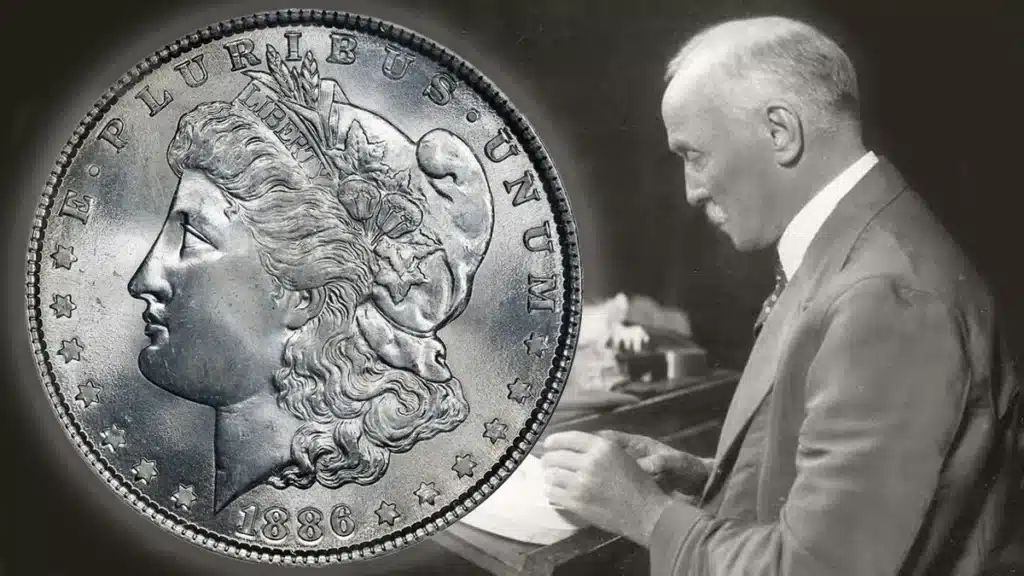
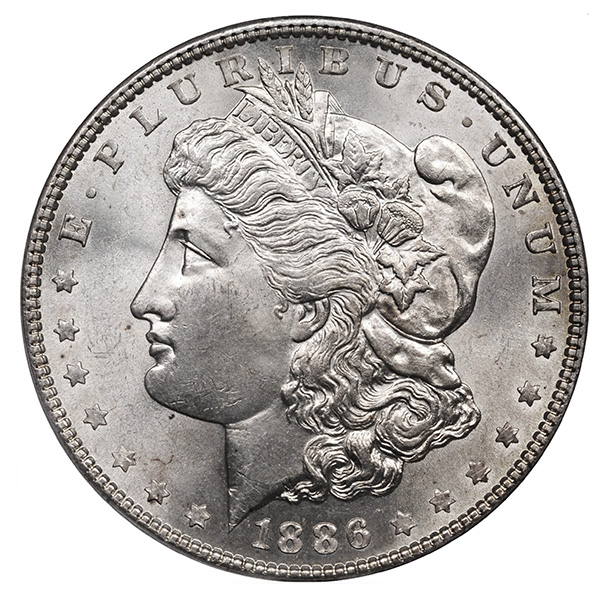
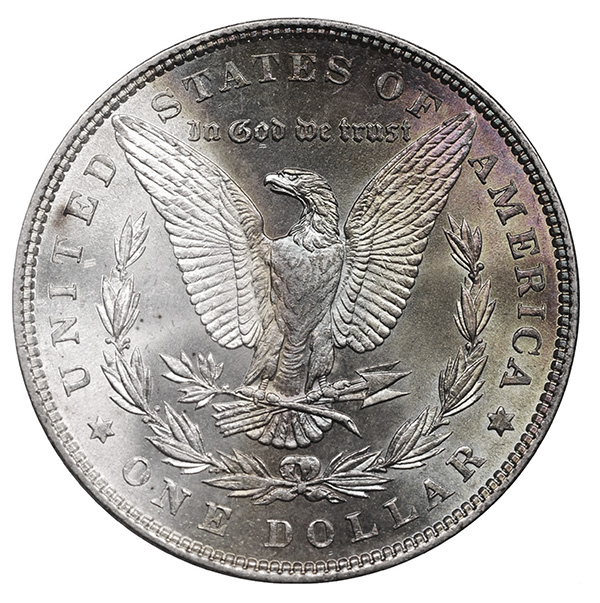 The reverse of the 1886 Morgan dollar is dominated by a heraldic eagle, its wings spread across the upper half of the coin. Between the upper tips of the eagle’s wings appears the motto IN GOD WE TRUST. The eagle clutches an olive branch in its right claw representing peace and in its left claw are three arrows symbolizing the nation’s ability to defend itself. The central eagle design is partly encircled by a laurel wreath.
The reverse of the 1886 Morgan dollar is dominated by a heraldic eagle, its wings spread across the upper half of the coin. Between the upper tips of the eagle’s wings appears the motto IN GOD WE TRUST. The eagle clutches an olive branch in its right claw representing peace and in its left claw are three arrows symbolizing the nation’s ability to defend itself. The central eagle design is partly encircled by a laurel wreath.
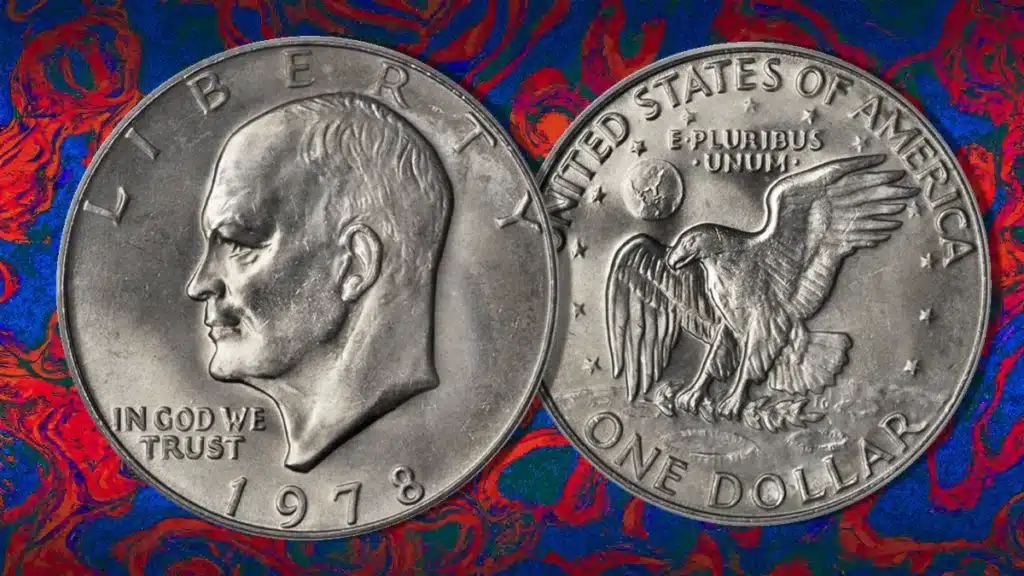
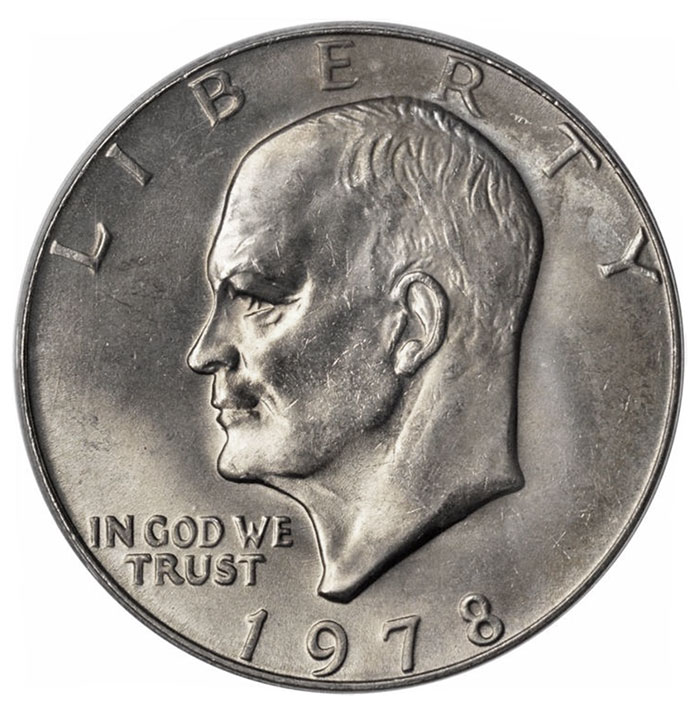

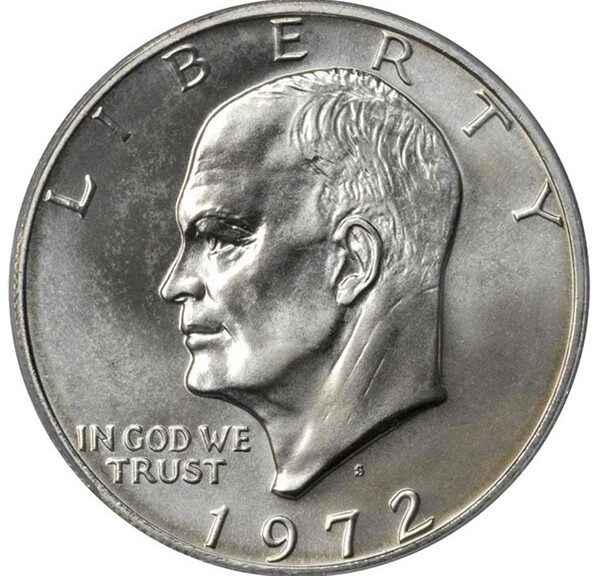
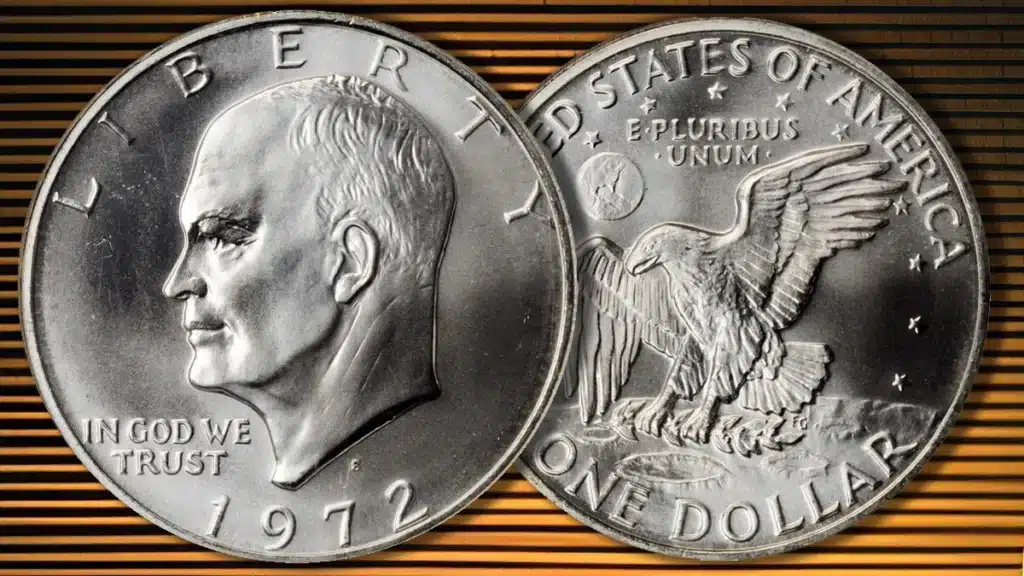
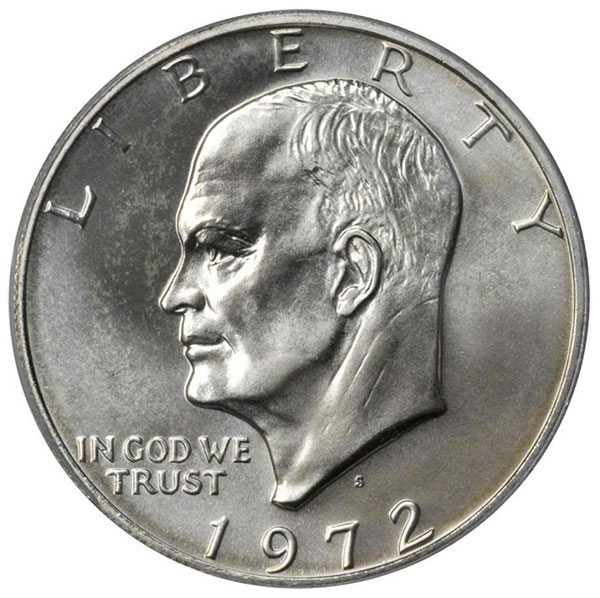 Gasparro’s portrait of Dwight D. Eisenhower (as President); Eisenhower facing to the left. Gasparro’s initials FG appear raised in the bust truncation. Beneath Eisenhower’s chin, to the left, is the motto IN GOD WE TRUST. LIBERTY wraps around the top of the coin in the space between the rim and the top of Eisenhower’s head. The date wraps around the bottom of the design, between the rim and the bottom of Eisenhower’s bust truncation. While Philadelphia-struck pieces bear no mintmark, coins struck at Denver and San Francisco will bear small mintmarks of “D” or “S” above the space between the last two digits of the date and below Eisenhower’s neck. On Eisenhower dollars, mintmarks were hand-punched and may vary in exact location and orientation.
Gasparro’s portrait of Dwight D. Eisenhower (as President); Eisenhower facing to the left. Gasparro’s initials FG appear raised in the bust truncation. Beneath Eisenhower’s chin, to the left, is the motto IN GOD WE TRUST. LIBERTY wraps around the top of the coin in the space between the rim and the top of Eisenhower’s head. The date wraps around the bottom of the design, between the rim and the bottom of Eisenhower’s bust truncation. While Philadelphia-struck pieces bear no mintmark, coins struck at Denver and San Francisco will bear small mintmarks of “D” or “S” above the space between the last two digits of the date and below Eisenhower’s neck. On Eisenhower dollars, mintmarks were hand-punched and may vary in exact location and orientation.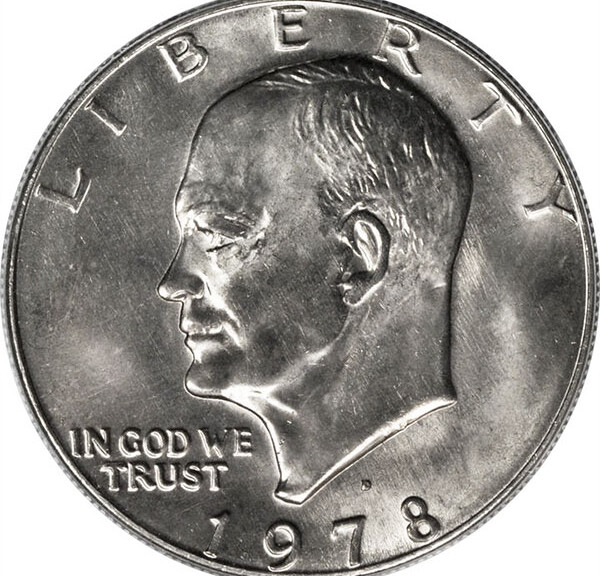

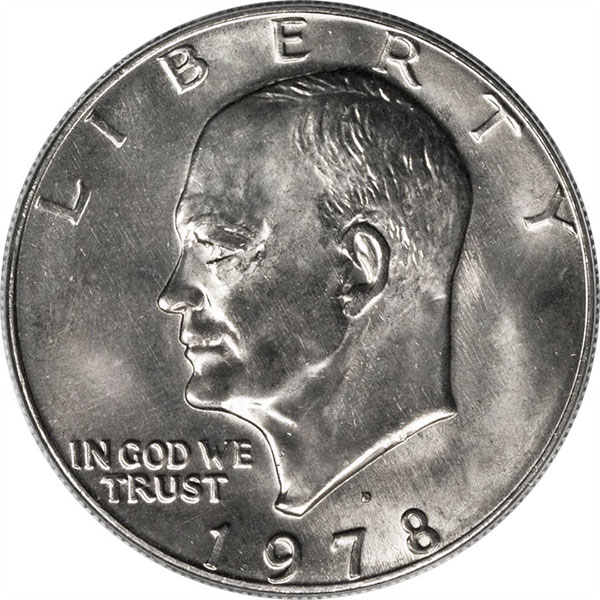
 The reverse is based on Michael Collins’ Apollo 11 Mission Patch design.
The reverse is based on Michael Collins’ Apollo 11 Mission Patch design.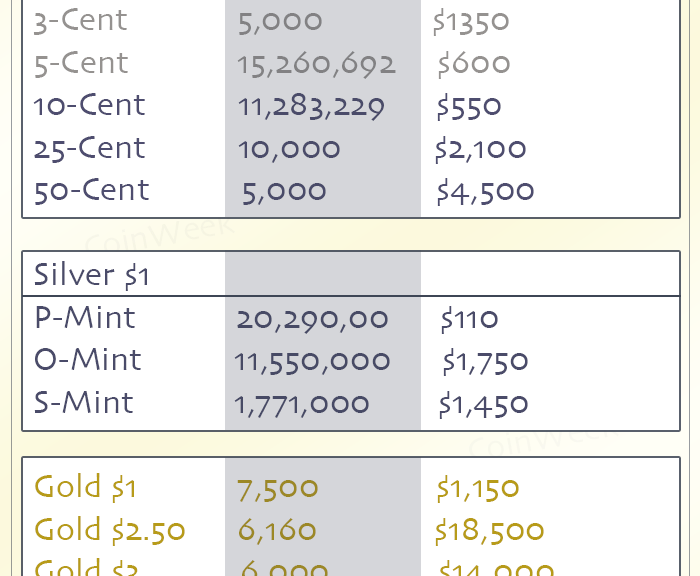
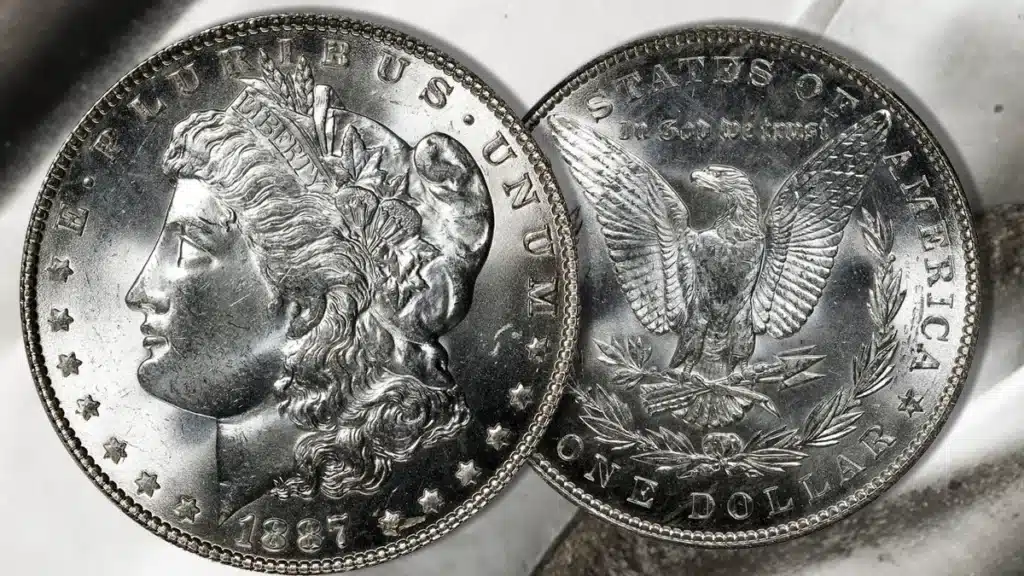
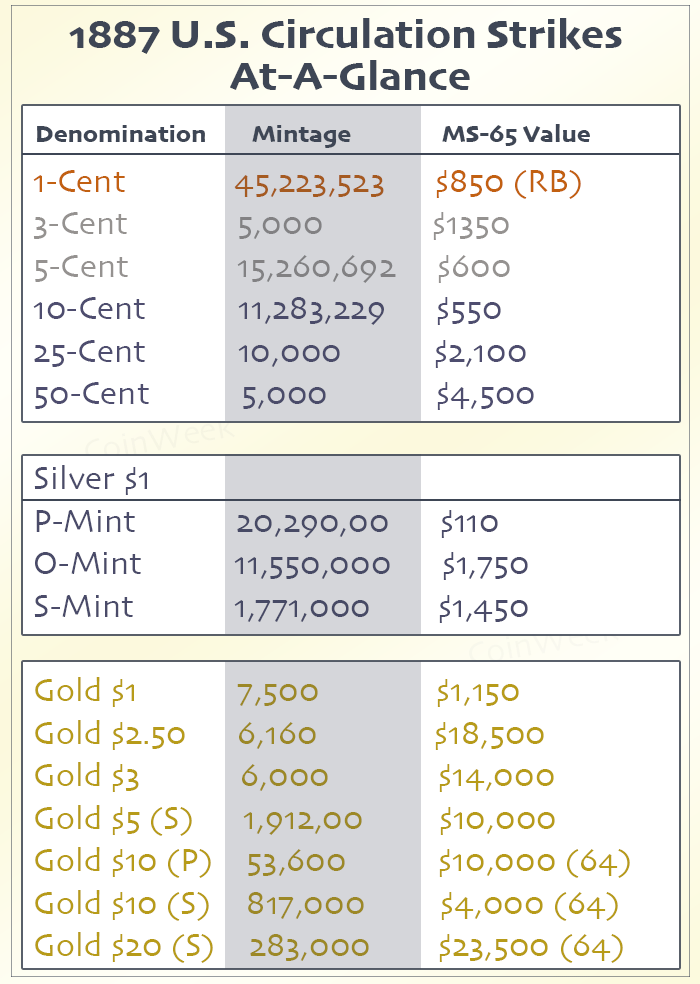
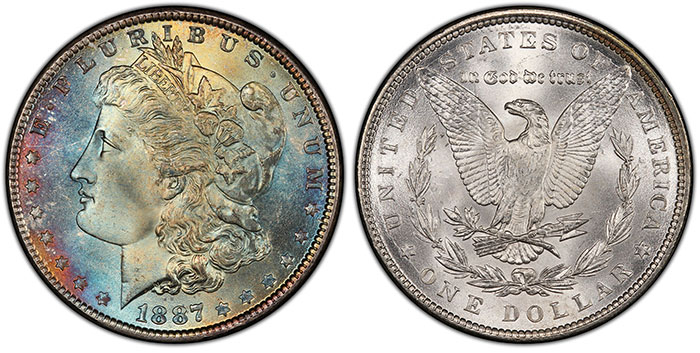
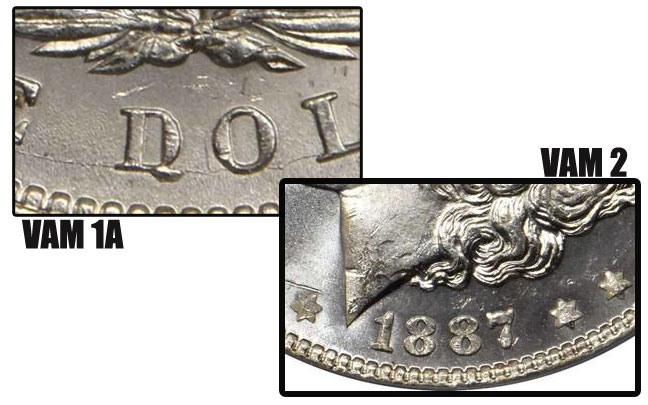
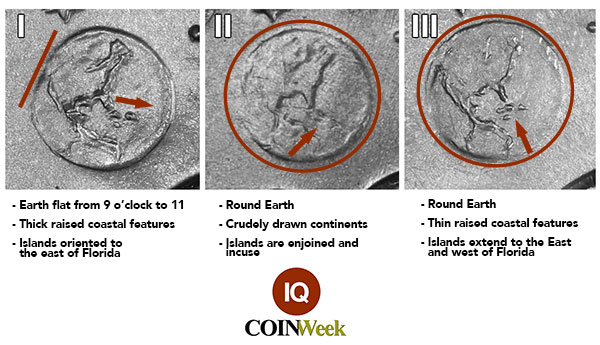
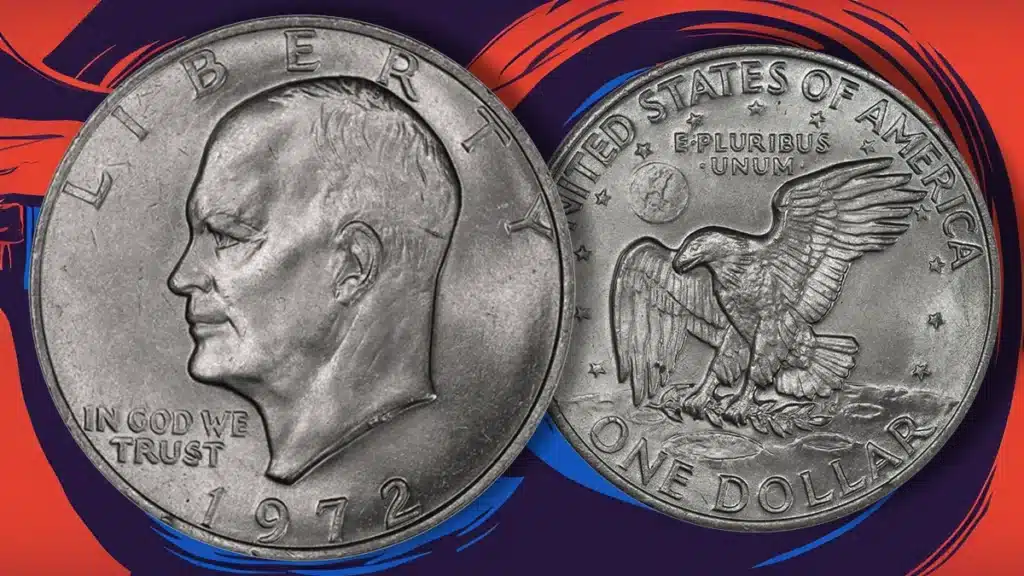

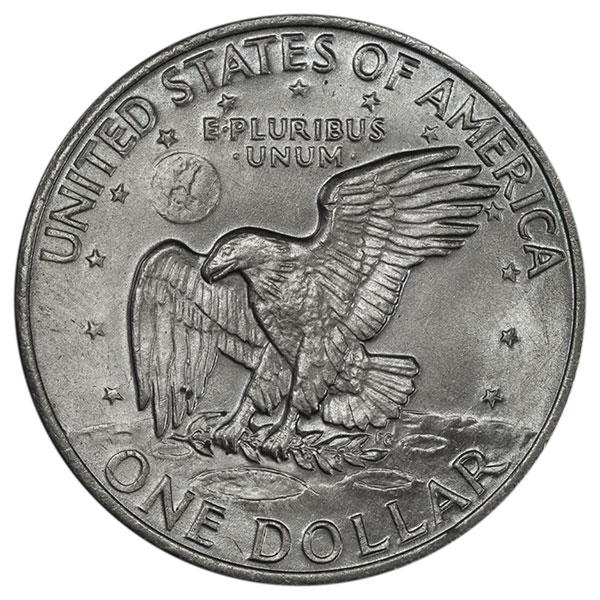
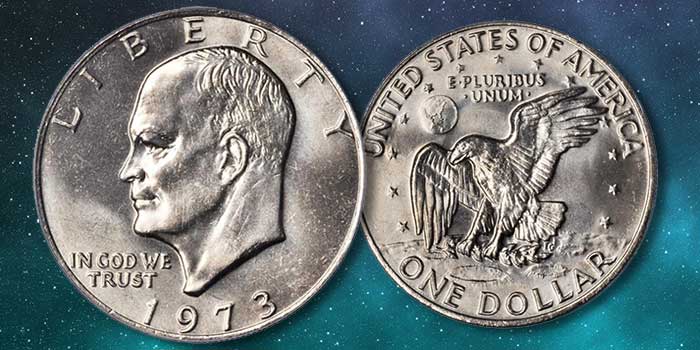


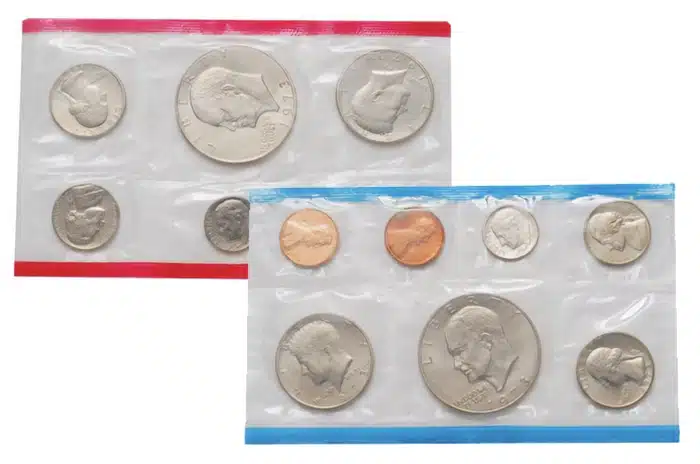
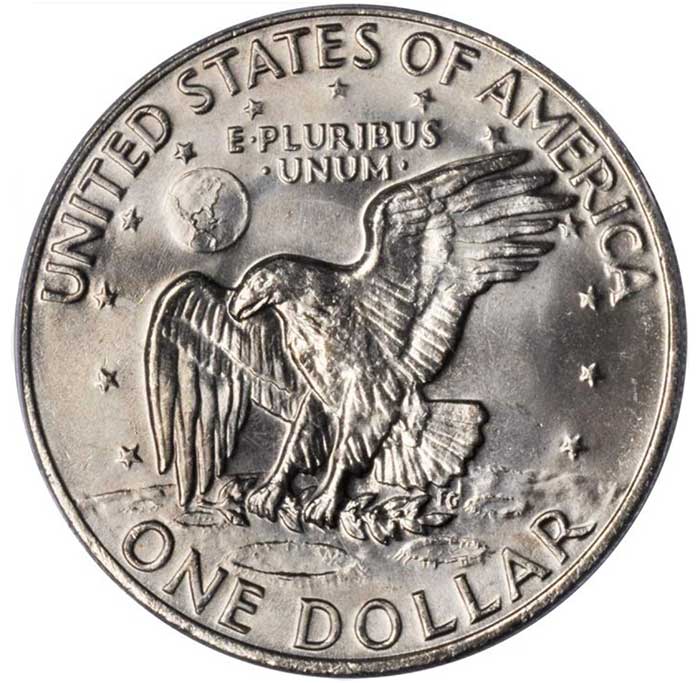

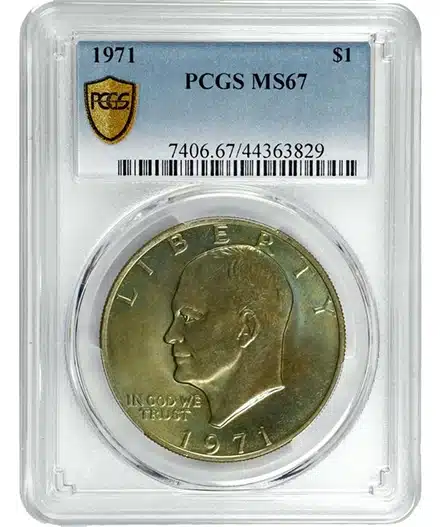
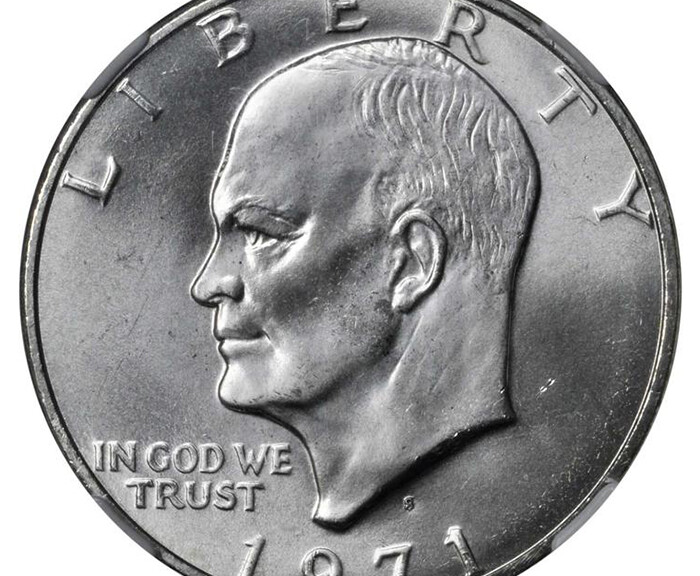


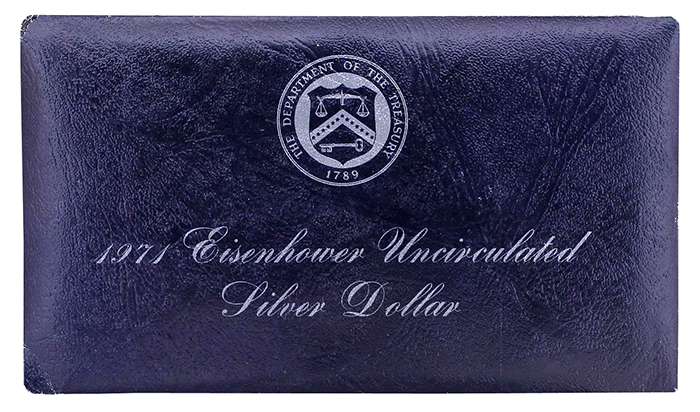
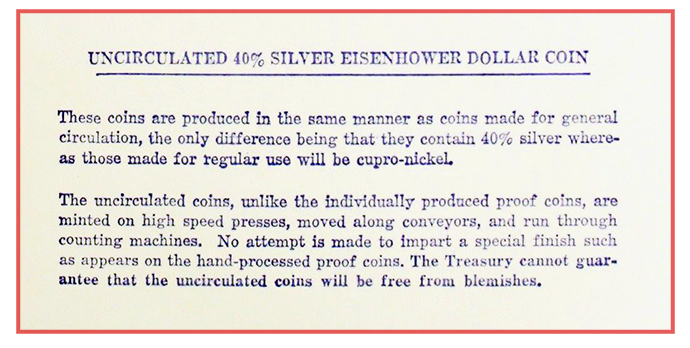


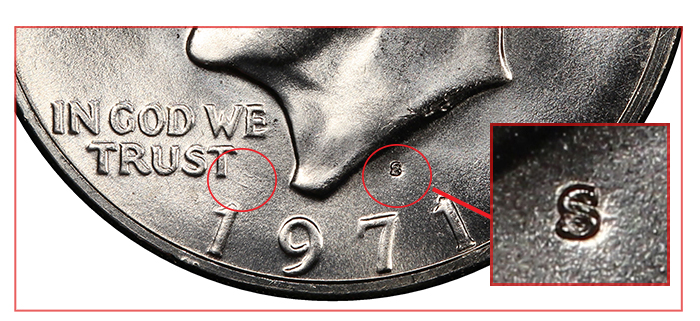

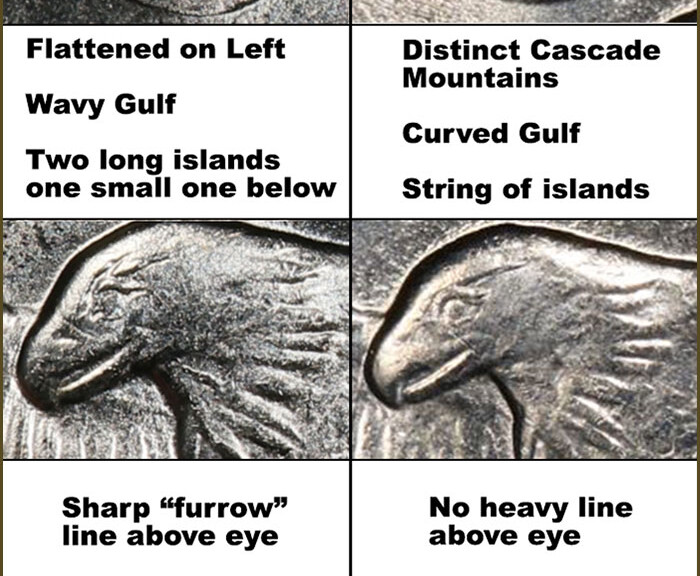

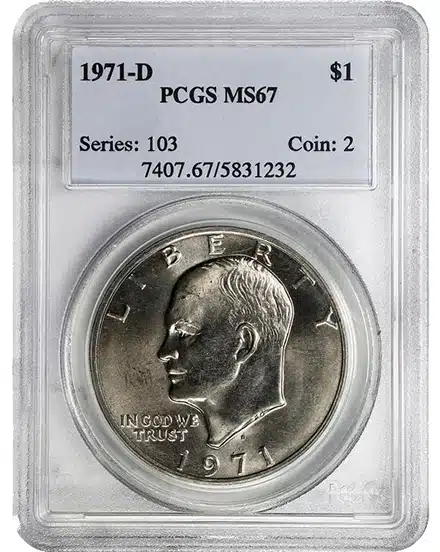
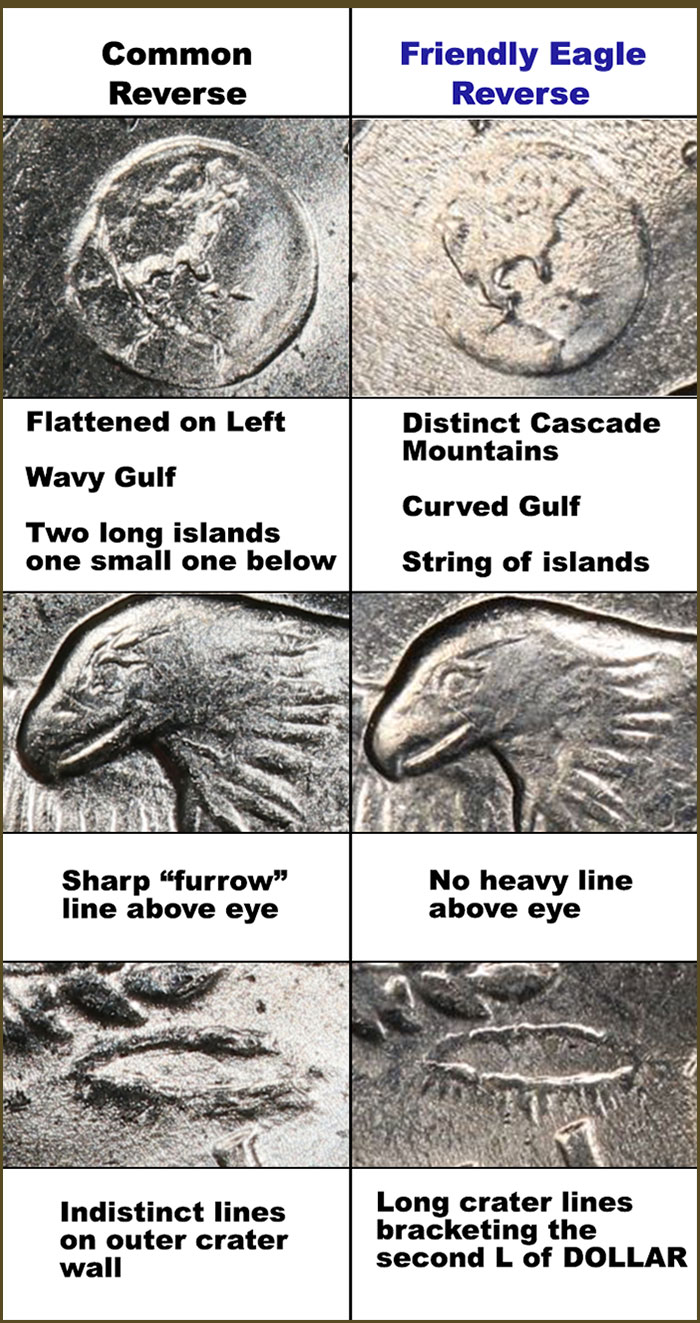
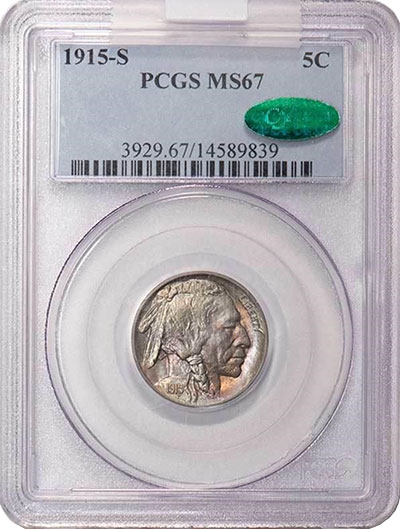
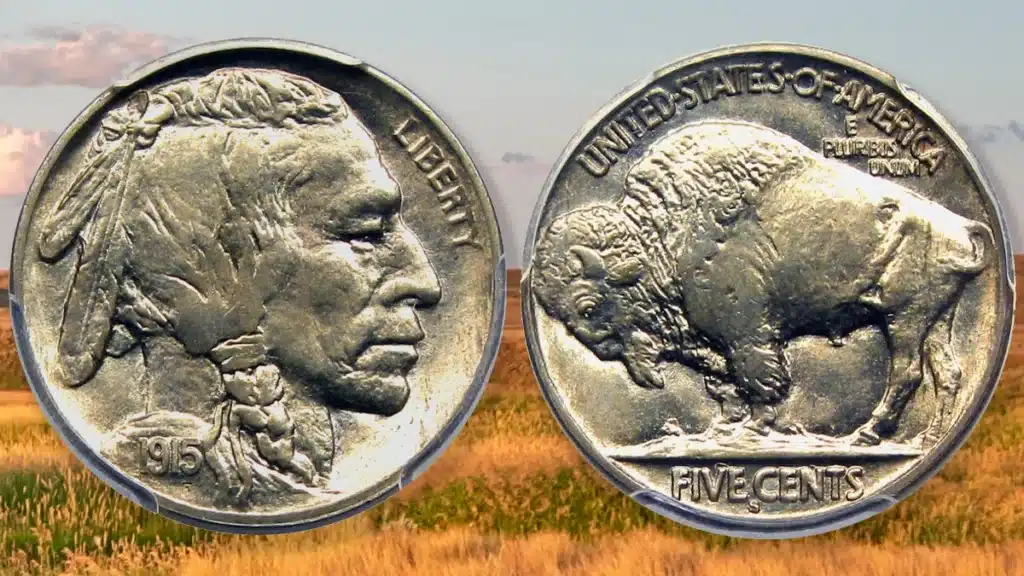

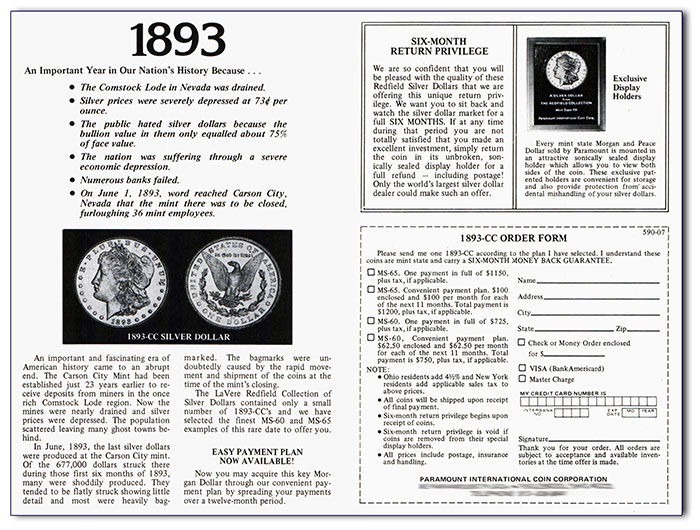


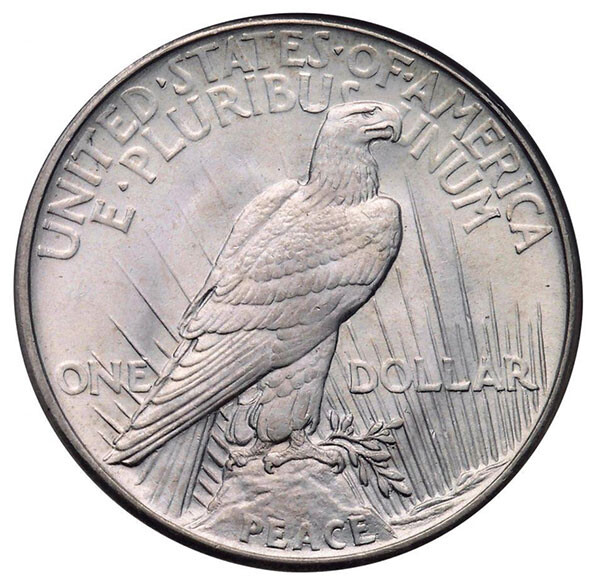
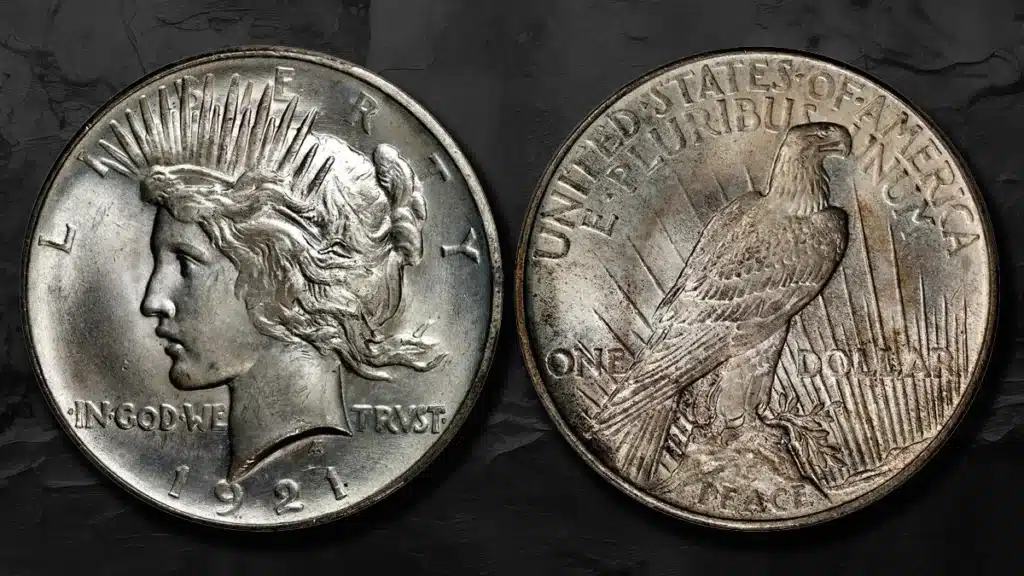
 The depiction of an American bald eagle perched on a mountaintop anchors the reverse. Clutched in its claws is an olive branch symbolizing peace; notably not included in this particular depiction of the eagle is a band of arrows representing military strength, a symbol commonly seen in similar visages of the patriotic avian emblem. The rightward-facing eagle is seen at an angle partly turned away from the viewer and towards a sunrise, which symbolizes the promise of dawning peace in the world.
The depiction of an American bald eagle perched on a mountaintop anchors the reverse. Clutched in its claws is an olive branch symbolizing peace; notably not included in this particular depiction of the eagle is a band of arrows representing military strength, a symbol commonly seen in similar visages of the patriotic avian emblem. The rightward-facing eagle is seen at an angle partly turned away from the viewer and towards a sunrise, which symbolizes the promise of dawning peace in the world.